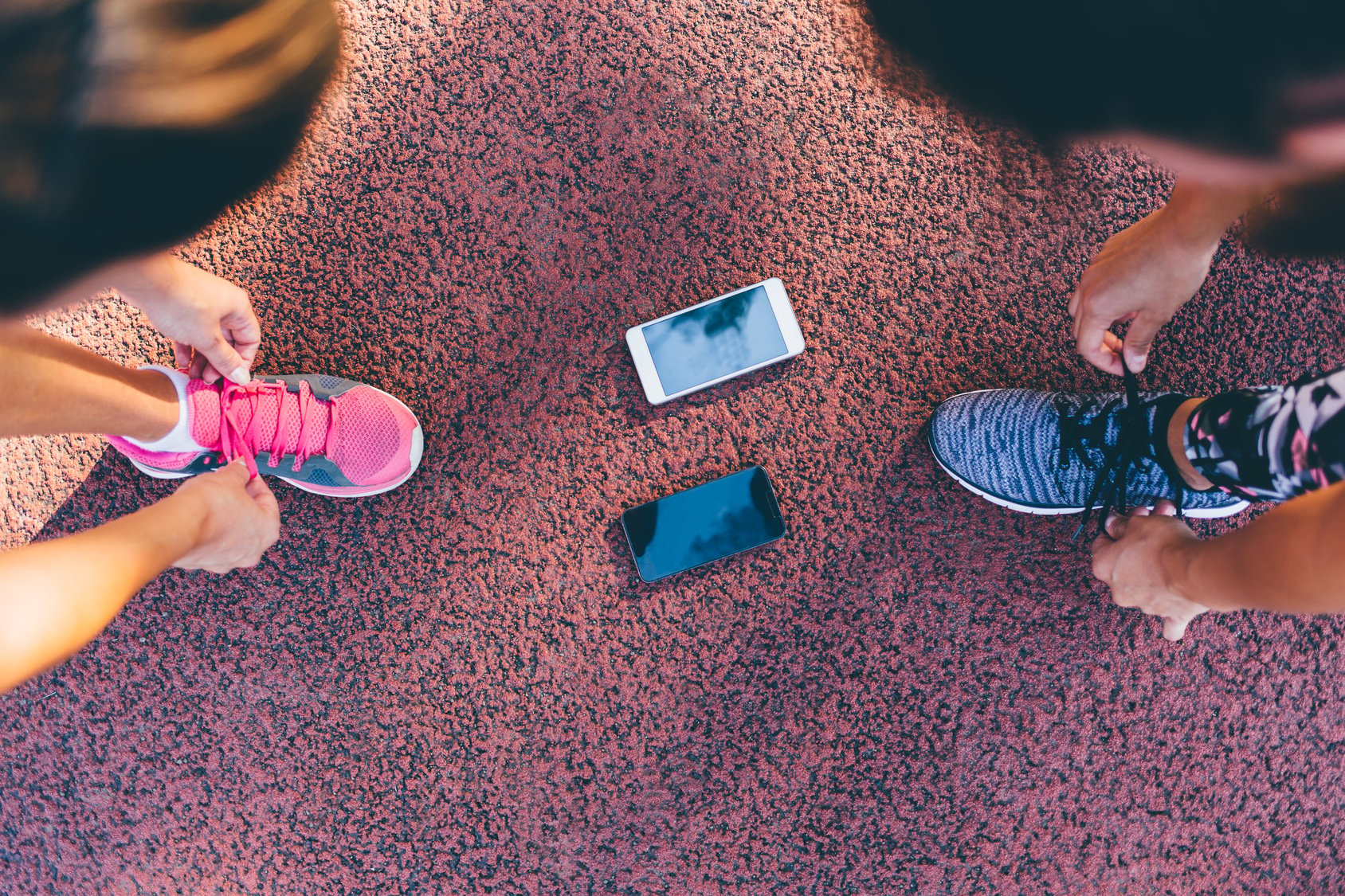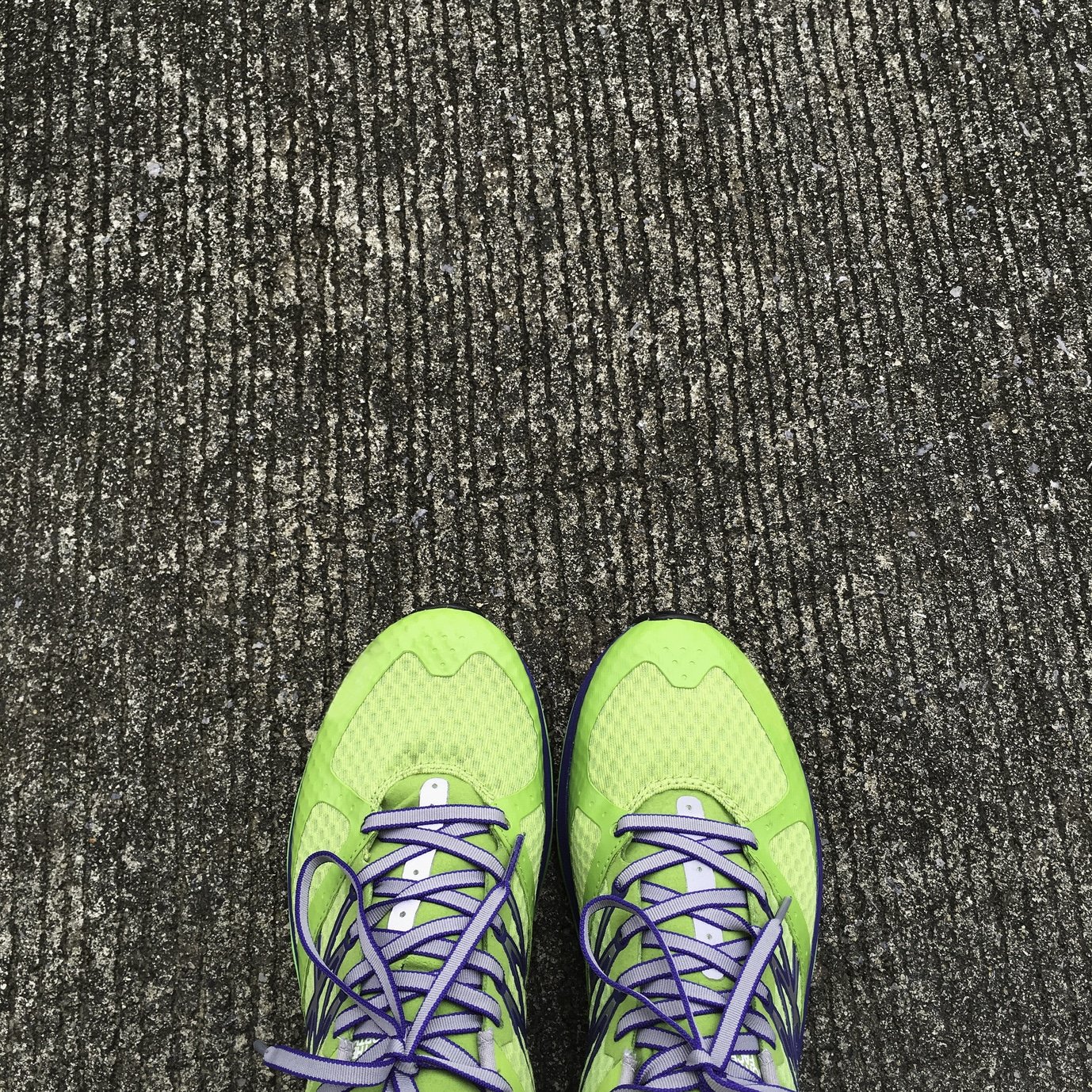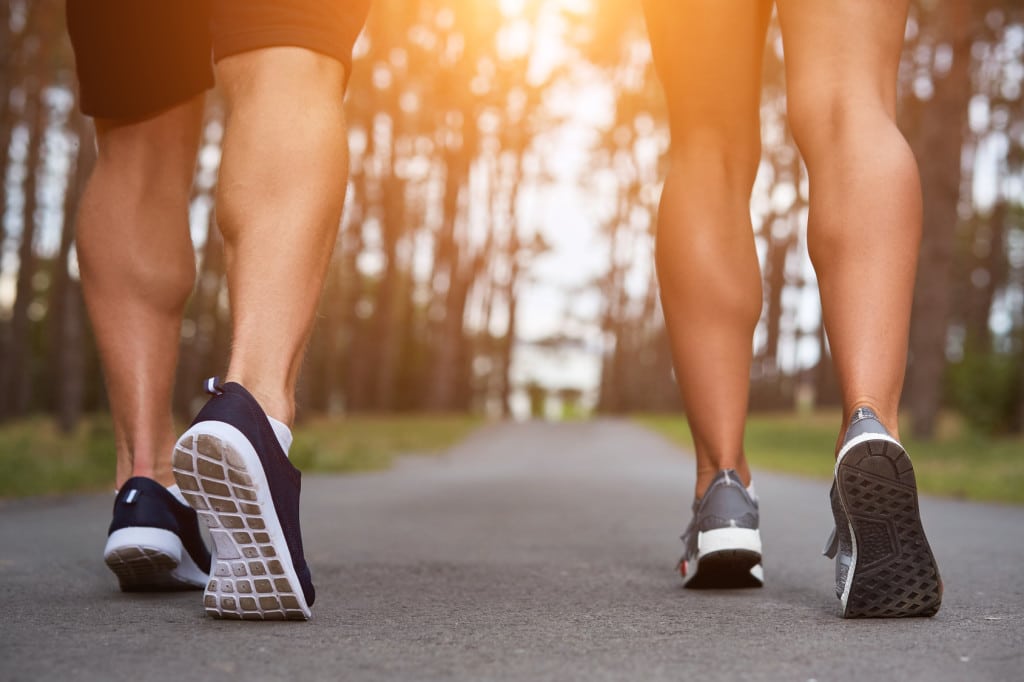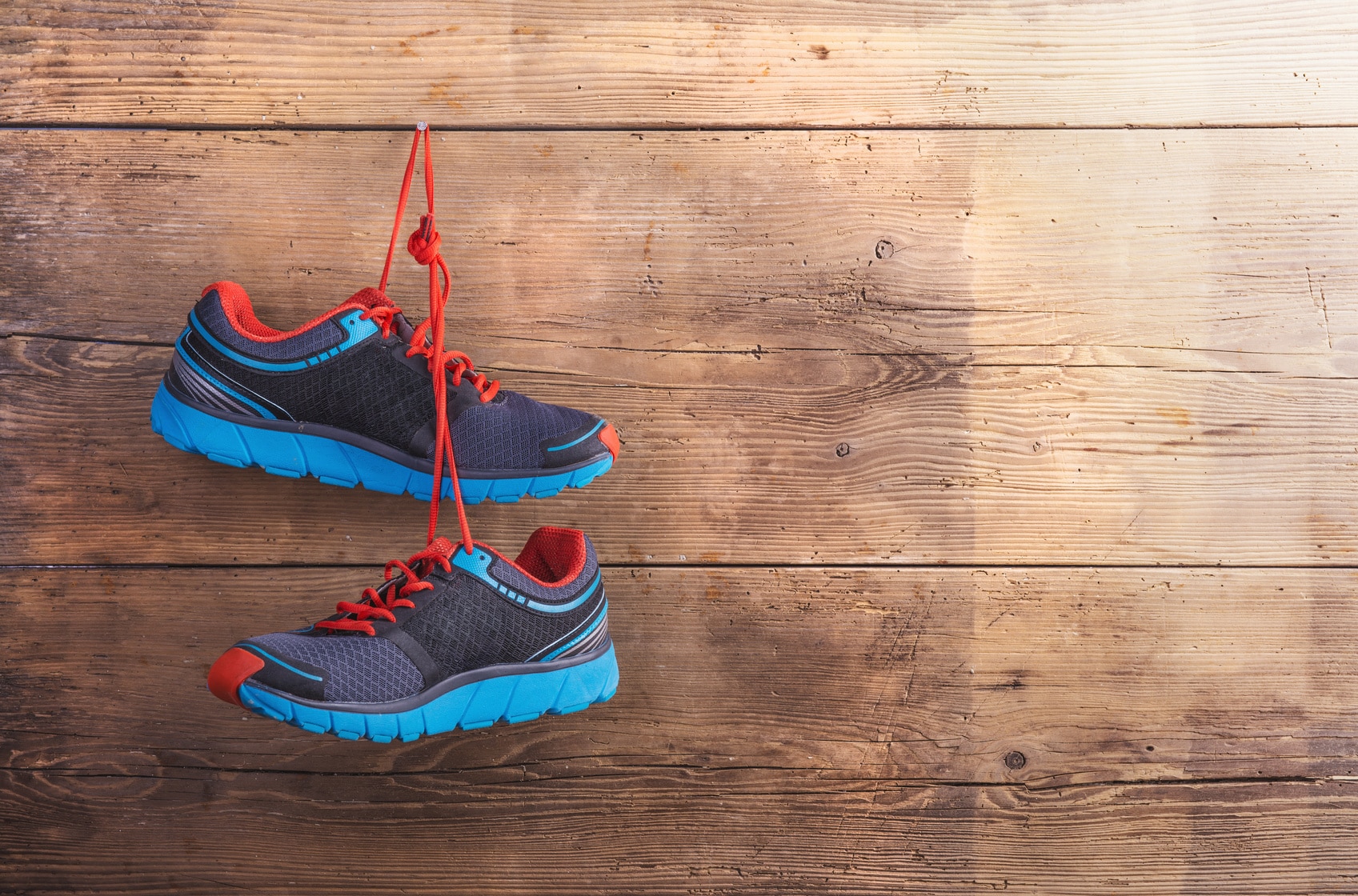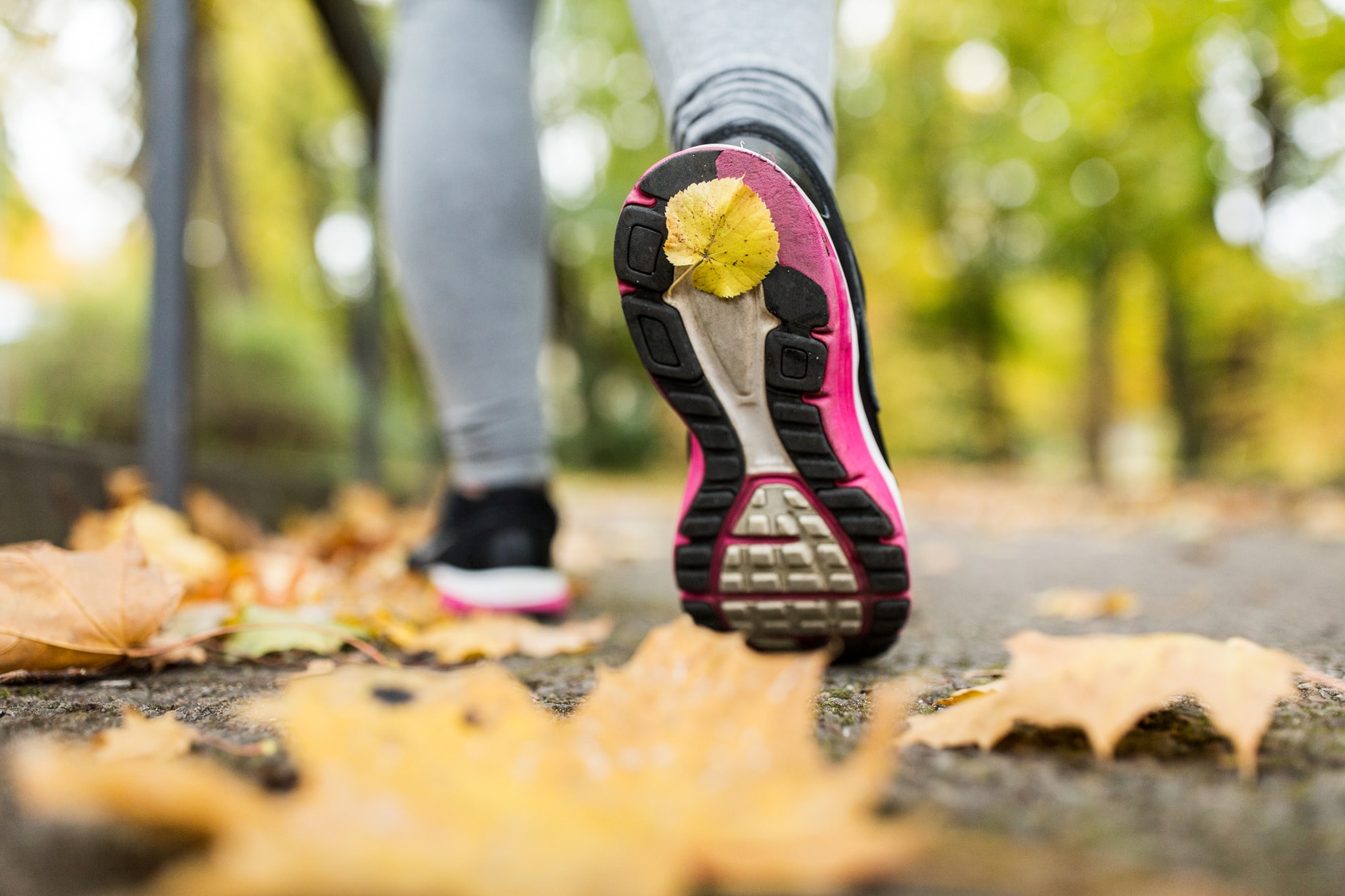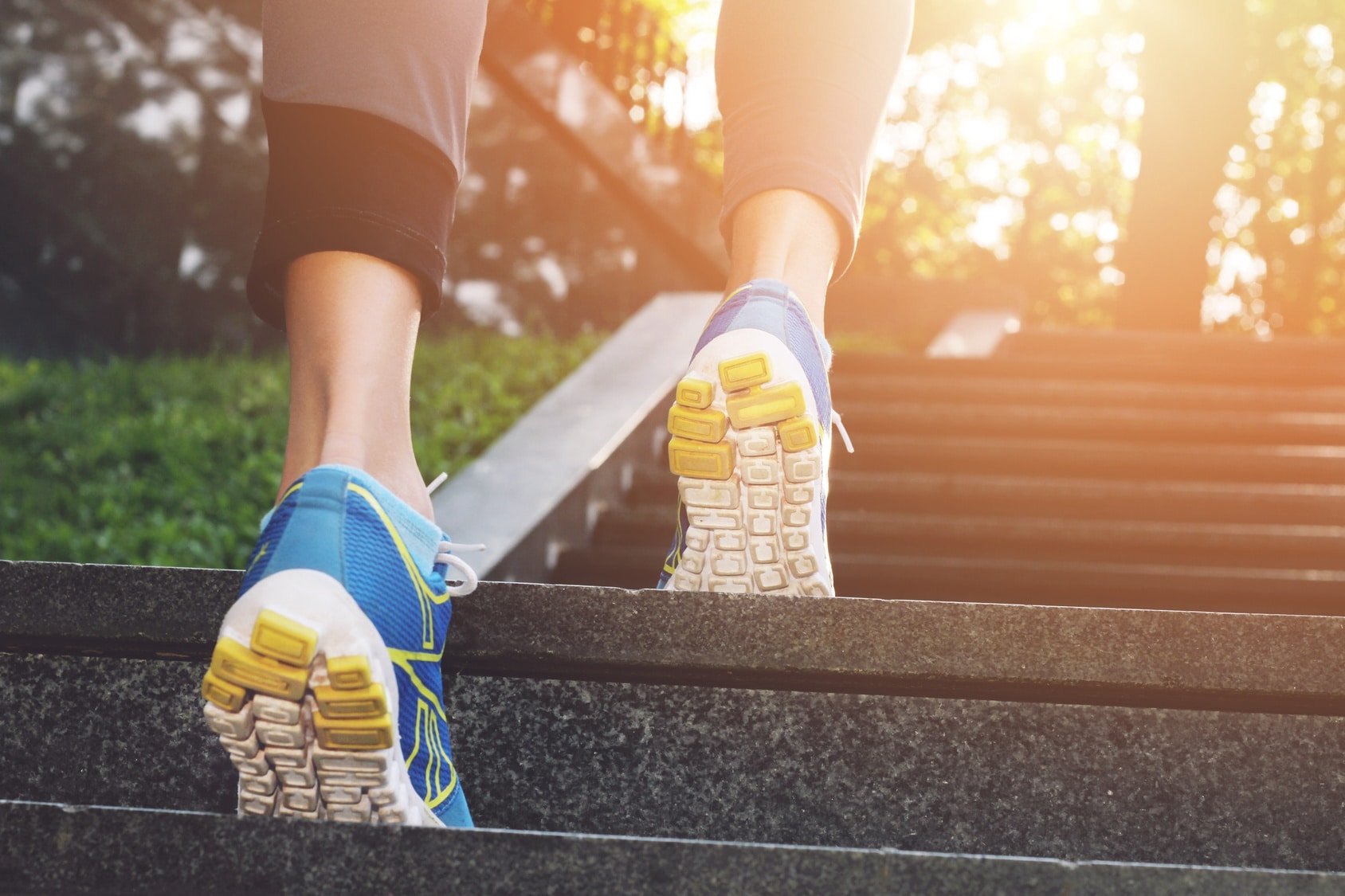Ready to uncover the secrets to selecting the ultimate running gear that’ll boost your performance and make those miles more enjoyable?
Well, you’re in for a treat because that’s exactly what we’re diving into today.
Let’s face it: whether you’re just starting your running journey or you’re a seasoned pro, the gear you choose can make or break your experience on the road. It’s not just about looking the part (although we do love a snazzy running outfit), but it’s about maximizing your potential and having a blast while you’re at it.
In this post, I’m gonna be dishing out the scoop on the must-have items that’ll turn your runs into pure bliss. And don’t worry if you’re feeling a tad overwhelmed by the vast world of running gear – I’ve got your back.
So, lace up those sneakers, get ready to upgrade your running game, and let’s roll!
What is Running Gear?
Running gear, running equipment, or running accessories is the general term used to refer to the list of items you can wear during a run.
And it’s a big business.
From running shoes, technical clothing, performance socks, and hydration belts to sports bras, compression garments, heart monitors, and GPS watches, this niche is one of the most profitable sectors in the global fashion and sports equipment market.
So, What Do You Really Need As Running Equipment?
The answer depends on your personal preferences, training level, training goals, where you live, budget, and how much you love high-tech, stylish fitness gadgets.
Everyone is different and might be in the market for various things.
No suit fits all.
But, all in all, a basic running kit includes proper running shoes, a T-shirt, shorts, socks, and a sports bra for female runners.
If you already have these in your wardrobe, then you have 90 percent of the must-have running accessories.
But how do you choose the right clothing and fabrics for running? That’s where the rest of this article comes in handy.
Running Gear 1 – Running Shoes
Picture this: you’re on the open road, wind in your hair, and the rhythm of your feet hitting the pavement. What’s on your feet can make or break this experience. That’s why running shoes are your secret weapon in the world of running!
Research has shown that the right pair of running shoes can significantly enhance your running experience and reduce the risk of injuries.
First things first, let’s debunk a myth: one size does NOT fit all. Your feet are unique, and your shoes should be too. That’s why a trip to a specialty running store is like a visit to a runner’s paradise.
Have you ever wondered why there are so many different running shoe brands and models? It’s because they cater to various foot types, running styles, and terrains.
Do you have a neutral arch, low arch (pronated), or high arch (supinated)? Knowing your foot type is like having the secret code to unlock the perfect pair of shoes. Studies have shown that wearing shoes that match your foot type can help prevent injuries.
The Main Things
So, how do you pick the right trainers?
As a rule of thumb, fit, comfort, and flexibility should be the ultimate measuring criteria whenever you’re looking for a new pair.
Here are the golden tips for picking the right sneakers:
- Go shopping for a new shoe in the evening when your feet are at their biggest (our feet tend to swell after prolonged sitting or standing).
- Get your shoes from a running specialty store. The pro staff will match you with the most suitable pair by assessing your foot type, running biomechanics, training needs, and personal preferences.
- Leave enough wiggle room between your big toe and the end of the shoe—at least a thumbnail’s space.
- Don’t under or overpay. A cheap pair will not provide enough support and won’t last you that long, whereas a super expensive pair is uncalled for—especially if you’re just a recreational runner.
Buy Quality
You might be tempted to grab that ultra-cheap pair off the shelf, but here’s the truth: those budget shoes often cut corners with cheap materials that won’t give your feet the support they need. It’s like running on cardboard!
Now, here’s where the sweet spot lies: the mid-range shoes, usually priced between $80 to $120. These shoes offer excellent cushioning, stability, and durability. It’s like getting a running shoe that’s the Goldilocks of the bunch—just right!
But wait, there’s a secret trick to saving some cash while still scoring high-quality kicks. Consider going for last year’s version of a mid or top-range shoe. The differences from the latest model won’t be that significant, but your bank account will thank you.
Expect to pay: $80-$160
Running Gear 2 – Running Clothing
Let’s talk threads! While we’ve already highlighted the pivotal role of running shoes, we can’t simply overlook the importance of the clothing that wraps around your running machine of a body.
Imagine this: you’re in the middle of a challenging run, beads of sweat glistening on your brow, and your clothes feel like they’re giving you a warm hug. Sound cozy? Not quite! That’s why you need high-tech fabrics like polyester, Coolmax nylon, or Lycra to save the day.
These materials are like moisture magicians. They wick sweat away from your skin faster than you can say “personal best.” Ever wondered how a candle sucks up liquid wax? That’s the science behind it. Your clothes pull moisture away from your body, keeping you dry and comfy.
High-performance fabrics are feather-light and move with your every stride. No more feeling weighed down or restricted during your runs. It’s all about freedom, my friend.
What’s more?
These fabrics help you stay chill during summer and cozy during winter. They retain heat when it’s frigid and let it escape when things heat up. It’s like having your personal climate control.
Say Goodbye to Cotton
Now, let’s talk about the running gear “no-no’s.” First on the list is cotton. While it’s your go-to for pajamas, it’s a big no-no for running attire. Why?
Cotton is like your buddy who never dries off after a swim. Once it gets wet, it stays wet, clinging to you like a heavy, scratchy blanket. Talk about discomfort!
Wet cotton rubbing against your skin is a recipe for chafing disaster. Painful blisters? No, thank you!
What’s more?
Cotton doesn’t play nice with temperature regulation. You’ll feel like you’re in a sauna during summer and trapped in a freezer during winter. It’s all about extremes, and extremes aren’t fun when you’re out on the road.
Sweatpants Alert
Now, about those sweatpants – they’re cozy, no doubt. But when it comes to running, they can be counterproductive. Why?
As you rack up the miles, your body generates heat. Sweatpants are like a seal that locks in that heat, making you feel like you’re running inside an oven.
The longer you run, the hotter and more uncomfortable you become in sweatpants. It’s like your legs are on a one-way trip to overheating town.
The Running Accessories and Clothes You Need
Here’s what to look for when buying running clothing.
Shirt
Your exercise wardrobe isn’t complete without a variety of running shirts for different weather conditions. It’s like having a toolbox with various tools for different jobs.
Here’s what you might need:
- Sleeveless Shirt: When the sun is blazing, and you want your guns (well, arms) to breathe, a sleeveless shirt is your go-to.
- Light Shirts: For those mild days, a light shirt is your trusty companion. It’s like your second skin, keeping you comfortable without feeling like you’re wrapped in a sauna towel.
- Heavy Turtlenecks: When winter rears its chilly head, turtlenecks are your best friends. They keep you snug and cozy, shielding you from the cold.
Choosing Your Running T-Shirt
When picking your running tee, consider these factors:
- Material Matters: Look for shirts made from nylon or trusted brand names like Dri-Fit, Climalite, or Coolmax. These materials are like a breath of fresh air against your skin.
- Mesh Panels Are Cool: Opt for shirts with mesh panels in high-heat areas like the back, underarms, and sides. It’s like having built-in AC for your body.
- Fit Like a Glove: Your running shirt should fit like it was tailor-made for you – not too tight, not too baggy. It’s all about feeling comfortable without any distractions during your run. Expect to pay $20 to $50.
Additional resource – Your guide to running compression arm sleeves
Leg Attire
When it comes to leg attire, you’ve got two stellar options: shorts and running tights. Let’s break it down:
- Shorts: Look for the ones that tick all the boxes. They should be made of breathable, lightweight fabrics that make you feel like you’re running on air. A bonus? Find shorts with a light mesh interior underwear lining for that extra comfort.
- Running Tights: If you’re ready to take your leg game up a notch, running tights are where it’s at. Proper tights are crafted from high-performance stretchy fabrics like Nylon or Supplex. These fabrics aren’t just comfortable; they’re moisture-wicking wizards. They’ll keep you dry and comfy no matter the weather.
Choosing Your Leg Attire
Make the right decision by adhering to the following:
- Light as a Feather: Regardless of your choice, your leg attire should be lightweight. We’re talking feather-light, so they won’t slow you down. They should protect you from debris, shrubs, and whatever nature throws your way without cramping your style.
- Pocket Power: Pockets are a runner’s best friend. Consider getting shorts with key pockets or extra pockets to stash your essentials—gels, keys, ID, or your trusty phone. It’s like having your own personal storage space while you conquer the trails.
- Free to Move: Most importantly, your leg gear should feel like an extension of you. It shouldn’t hinder your movement; it should enhance it. Whether you’re sprinting down the road or conquering rugged terrain, your legs need to be free to do their thing.
Expect to pay $20 to $60.
Additional resource – Compression Leggings for running
Expect to pay $20 to $70
Your Underwear
Running underwear isn’t just an optional add-on. It’s a layer of support and insulation that can make a world of difference, especially during those chilly winter runs. They provide that extra buffer against the cold and keep you feeling snug.
When it comes to choosing your running underwear, comfort is the name of the game. You want something that feels like a second skin, something that you forget you’re even wearing. It shouldn’t chafe, ride up, or distract you in any way.
What’s more?
Keep in mind that everyone’s different, and what works best for you might not be the same for someone else. So, whether you prefer a certain fabric, style, or fit, go with what makes you feel the most comfortable. It’s all about finding your perfect match.
Expect to pay $5 to $20
Sports Bras
When it comes to sports bras, there’s no room for compromise. An improper sports bra won’t give you the support you need, leading to uncomfortable bouncing. But that’s not the worst part—over time, this bouncing can stretch the ligaments around your breasts, and that’s not something you want.
Now, for the silver lining. A proper sports bra can be a game-changer. It can reduce breast movement by a whopping 50 to 60 percent, according to the experts. That’s some serious support!
When you’re shopping for a sports bra, comfort should be your top priority. Make sure it’s designed for high-impact activities and feels like a cozy hug so you can focus on your run without any distractions.
Expect to pay $20 to $50.
Running Socks
Look for running socks made with high-performance technical materials. These little wonders will keep your feet dry and cool, which is your first line of defense against those pesky blisters. Some top-notch socks even come with a built-in mesh venting system for extra breathability and comfort.
It’s not just about the sock material; it’s also about the fit. Pay special attention to how the sock hugs your arch and heel. Say no to socks that slide off your feet or bunch up inside your shoes—those are a recipe for irritation and blisters, and we don’t want that.
If you’re prone to blisters, don’t fret. You have options. You can go for thicker running socks or even double up for added protection. Some socks come with extra padding in the heel and rear of the foot, offering a plush cushion against the miles.
Feeling fancy? Give compression socks a try. They can help with circulation and reduce muscle fatigue during your run. Just make sure they fit snugly but not too tight.
Expect to pay $10 to $30
Running Jackets
Your running jacket should be your shield against the elements. Look for one that repels water to keep you dry in drizzles and snow flurries. But here’s the trick—while it keeps moisture out, it should also let sweat escape. In other words, it needs to wick away that sweat and dry fast to keep you comfy.
The best running jackets are usually crafted from fabrics like Ripstop Nylon or Pertex. These materials are lightweight, durable, and fantastic at repelling wind and moisture.
Expect to pay $20 to $70
Running Hat
Although there’s a debate about how much heat we really lose from our heads, but one thing’s for sure—a running hat is your best friend when the temperatures drop!
When the mercury dips, you’ll be glad you have a trusty running hat. It provides that extra layer of insulation to keep your head cozy.
Look for hats made of warmer materials like wool or cashmere. These fabrics are excellent at trapping heat and keeping you toasty when it’s frosty outside.
Expect to pay $15 to $50
Running Gloves
Look for gloves that are breathable and moisture-wicking. Sweaty hands in the cold can lead to discomfort and even frostbite, so choose gloves that keep moisture at bay.
For those freezing days, opt for thin-liner gloves. They’re like a warm, cozy hug for your hands. These lightweight gloves provide the insulation you need without sacrificing dexterity.
Expect to pay $20 to $60
Find the Right Mixes
When it comes to running, your outfit can make or break your performance.
Here’s a quick guide to ensure you’re dressed for success:
- Time of Day: Morning, noon, or night? Consider visibility. Reflective gear is a must for low-light runs.
- Training Intensity: High-intensity workouts generate more body heat. Opt for moisture-wicking fabrics to stay cool and dry.
- Workout Length: Longer runs require more comfort. Moisture-wicking and chafe-resistant gear are your best friends.
- Climate Conditions: Rain or shine, your gear should adapt. Invest in a good running jacket for wet days.
- Outdoor Temperatures: Layer up in the cold, but don’t overdo it. Dress in breathable layers you can shed as you warm up.
- Personal Preferences: We all have our quirks. Find what works for you, whether it’s shorts over tights or a lucky running hat.
Additional resource – How to choose running gaiters
Hot Weather Running
During extreme weather, you’ll want running gear that pulls moisture away from your skin while shielding you from the sun.
This will keep you both well-hydrated and comfortable.
Dress in Layers—Winter Running
Running in the cold can be invigorating, but nailing your outfit is key. Here’s how to layer like a pro:
- Start with a Moisture-Wicking Base Layer: This keeps sweat off your skin, preventing that chilly, clammy feeling.
- Add an Insulating Layer: Think fleece or a long-sleeve shirt. It traps warmth without bulk.
- Top it Off with a Wind-Resistant Jacket: Protect yourself from biting winds while letting excess heat escape.
- Cover Those Extremities: Don’t forget gloves and a hat. Most heat escapes through your head and hands.
- Opt for Tights or Running Pants: Protect those legs from the cold, and choose moisture-wicking fabrics.
- Don’t Overdo It: Remember, running generates heat. If you’re sweating buckets, shed a layer or two.
The Main Layers
Creating the perfect layered outfit for cold-weather running is an art. Follow these steps to nail your winter running attire:
The Base Layer: Moisture-Wicking Marvel
Start with a snug, moisture-wicking base layer. Look for technical T-shirts or tank tops that keep sweat away from your skin. This prevents that dreaded clammy feeling.
The Insulating Middle: Embrace the Warmth
Over your base layer, add an insulating layer. This should be a bit looser for comfort but still keep you warm. Think long-sleeve shirts or cozy fleece pullovers.
The Outer Shield: Wind and Water Protection
Finish off your ensemble with an outer layer that shields you from the elements. Look for windproof and waterproof options like nylon shells or trusty windbreakers.
Additional resource – Prescription Glasses for runners
More Running Clothing Items
When it comes to tackling various weather conditions during your runs, don’t forget to gear up from head to toe. Here’s your ultimate guide:
Face Mask or Balaclava (Cold and Windy Days)
For those frosty, blustery runs, a face mask or balaclava keeps your face warm and shields it from biting winds.
Stocking (Cold Days)
When the mercury drops, a stocking (or beanie) ensures your noggin stays toasty during your chilly workouts.
Cap with Visor (Sunny, Rainy, or Blinding Conditions)
A cap with a visor is your versatile friend. It provides shade on sunny days, keeps rain off your face, and shields your eyes from blinding headlights at night.
Waterproof Pants (Rainy Days)
When rain threatens your run, waterproof pants are a game-changer. They keep your legs dry so you can splash through puddles worry-free.
Wind-Resistant Jacket (Rainy Days)
Pair your waterproof pants with a wind-resistant jacket to stay dry and comfortable during wet weather.
Sweatpants (Rainy Days)
For extra warmth and protection on rainy days, layer up with sweatpants. They’ll keep your legs cozy and dry, even when it’s pouring. Want more? Here’s the full guide to winter running gear.
Running Gear 4 – Sports Watch
A GPS watch transforms your workouts into data goldmines. It tracks your running time, records split during races, and helps you spot training patterns. All this info fuels your progress and pushes you to new personal bests.
If you’re just starting out, that trusty “start and stop” button on your GPS watch is your best friend. It’s your go-to for measuring run/walk intervals, ensuring your training matches your fitness level.
What’s more?
Most GPS watches come with built-in GPS systems. They not only monitor your distance but also your pace. Knowing how far and how fast you’ve run is key to tracking your improvements.
As a beginner, you don’t need to splurge on fancy gear. A simple GPS watch with a start/stop button can work wonders. But, as you progress and dive deeper into your running journey, consider upgrading to a watch that tracks pace, heart rate, and intervals for more precise workouts.
GPS watches come in all shapes and sizes, catering to every budget. From budget-friendly options like the Gosasa GOSK1155B at around $12 to the top-of-the-line Garmin Forerunner 910XT, there’s a watch for everyone.
Expect to pay: $10-$500+
Running Gear 5 – Headphones
Multiple studies have proven it: music and running are a match made in workout heaven. Music can amp up your performance, boost consistency, and turn your training sessions into pure joy.
When picking your running headphones, keep these three golden rules in mind:
- Toughness: They need to be as rugged as your training regimen.
- Moisture Resistance: Rain or shine, sweat or drizzle, they should keep the music flowing.
- Fit is King: Even the crispest tunes won’t save you if your headphones keep doing a vanishing act mid-run. Snug and comfy fit is the name of the game.
Note: If you’re running outdoors on the streets, then be careful. Listening to music while running can block out traffic noises, which can set the stage for accidents and other horrible tragedies.
Additional Resource – Here’s your guide to hydration running vests
Running Gear 6 – Heart Rate Monitor
Alright, runners, let’s talk about taking your training to the next level. Whether you’re a seasoned pro or just lacing up those running shoes for the first time, a heart rate monitor is your secret weapon. Here’s why it’s a game-changer:
Your HRM is like a personal running coach. It helps you find that sweet spot in your training—no overdoing it, no slacking off. It’s all about hitting that Goldilocks zone.
Are you ever worried about undertraining or pushing yourself too hard? Your HRM is the voice of reason, guiding you to that ideal training intensity. It’s the trusty navigator on your running journey.
HRMs come in all shapes and sizes. You can go basic and focus on heart rate alone or opt for the high-tech models that serve up a buffet of data, including calories burned. The choice is yours.
Some advanced running watches come with a built-in HRM. If you’ve already got one of these wrist wonders, you might be all set.
Remember, a heart rate monitor isn’t a must-have for every runner, but it’s a valuable tool for those looking to fine-tune their training.
Expect to pay $30 to $350.
Additional Resource – Here’s the full guide to calf compression sleeves for running
Adding it All Up
So, how much you should invest in your running kit?
As previously stated, there is no right or wrong answer to that question.
It’s all up to you.
You might already have in your current workout wardrobe the bare essential running equipment.
But, irrespective of your budget, fashion sense, technological sophistication, and training goals, let functionality, fit, and comfort be your primary guiding criteria.
Your running gear is a performance tool.
Not a fashion statement.
I cannot emphasize this enough.
Additional resource – How to find cheap running gear

